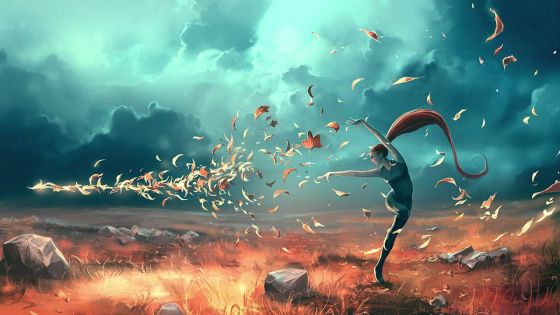Difference between revisions of "Accompaniment (sage study)"
Tao alexis (talk | contribs) |
Tao alexis (talk | contribs) |
||
| Line 1: | Line 1: | ||
[[File:Accompaniment (sage study).jpg|right|560px|thumb]] | [[File:Accompaniment (sage study).jpg|right|560px|thumb]] | ||
| − | '''Accompaniment''' is a [[Sage Study|sage study]] of the '''[[Bard Sage Abilities#Dance|Field of Dance]]''', encompassing the production of auditory sounds that complement | + | '''Accompaniment''' is a [[Sage Study|sage study]] of the '''[[Bard Sage Abilities#Dance|Field of Dance]]''', encompassing the production of auditory sounds that complement the movement to music. This includes the production of music using an instrument or voice; the acoustic movement of the body and the setting; and the use and maintenance of silence when moving artistically. The variety of dynamic and temporal variations available to the artist allows control and manipulation of the audience and the environment. |
As higher forms of thematic content and emotional responses are beckoned for the dancer's presentation, it becomes possible to generate accompaniment through movement, assisting the style and mood of the message being conveyed throughout the field of Dance. | As higher forms of thematic content and emotional responses are beckoned for the dancer's presentation, it becomes possible to generate accompaniment through movement, assisting the style and mood of the message being conveyed throughout the field of Dance. | ||
Revision as of 23:44, 1 December 2021
Accompaniment is a sage study of the Field of Dance, encompassing the production of auditory sounds that complement the movement to music. This includes the production of music using an instrument or voice; the acoustic movement of the body and the setting; and the use and maintenance of silence when moving artistically. The variety of dynamic and temporal variations available to the artist allows control and manipulation of the audience and the environment.
As higher forms of thematic content and emotional responses are beckoned for the dancer's presentation, it becomes possible to generate accompaniment through movement, assisting the style and mood of the message being conveyed throughout the field of Dance.
The sage abilities below are those acquired by a character through the study, according to status.
Amateur Status
- Aural Setting: performs a dance that transforms a common natural setting into a place of rememberance and beauty.
- Play Instrument: enables the character to proficiently make musical sounds with an instrument of choice.
- Stealth: a stepping-stone towards the character's ability to move with extraordinary silence, with a side effect similar to that related to sure-footedness.
Authority Status
- Master Instrument: beyond playing, a comprehension of reading notes, improvisation, genre, intonation, dynamics, melodic phrasing and more.
